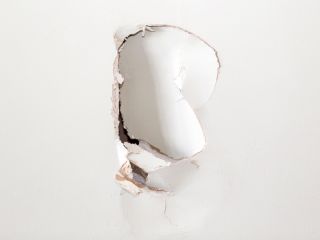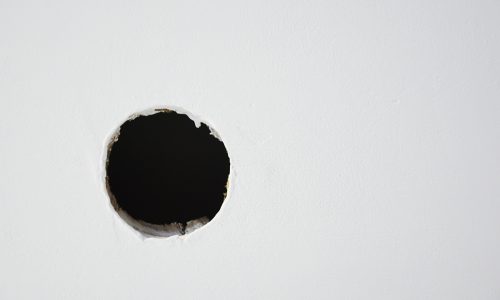Achieve a modern finish with Interior Painting guided by knowledgeable drywall contractors.
Step-by-Step Approaches to Getting Flawless Drywall Repair Work and Setup
Attaining remarkable drywall repair and installation requires a methodical strategy. It involves comprehending the different kinds of drywall and the tools needed for the job. Proper area preparation is crucial prior to beginning any kind of work. drywall contractor. Each step, from patching holes to mounting brand-new sheets, needs attention to information. The procedure does not end with installment; completing strategies are crucial for a polished look. The next actions will ensure a smooth result, however exactly what do they entail?
Comprehending Drywall Kind and Tools Needed

The setup devices are similarly vital. An energy knife is crucial for reducing drywall sheets, while a drywall saw can help in making exact cuts for outlets or fixtures. T-squares assure precise dimensions, and drywall screws or nails secure the panels to wall studs. Furthermore, a drywall lift can promote the installation of big sheets, lessening physical stress. Experience with these devices and types considerably adds to the effectiveness and quality of drywall jobs.
Preparing the Area for Repair Service or Setup
Preparing the area for drywall fixing or installment is essential to assure a smooth and efficient procedure. The surrounding room must be removed of furniture and other obstacles to provide ample functioning space. This not just guarantees safety however likewise avoids damages to valuables. Next, it is crucial to cover the flooring with ground cloth to capture any type of debris or dirt produced throughout the job.
In addition, the walls need to be inspected for any type of loose paint or wallpaper that might hinder attachment. Getting rid of these aspects creates a tidy surface area for the new drywall. Before beginning, it is recommended to shut off power to electric outlets or fixtures around. Guaranteeing sufficient lighting in the work space will better improve visibility and emphasis during the repair or installment process. Interior Painting. By carefully preparing the location, one lays the groundwork for an effective drywall job
Step-by-Step Refine for Patching Holes

Covering openings in drywall requires a systematic technique to assure a smooth fixing. The very first step involves examining the dimension of the hole. For tiny holes, a patching substance might be enough, while larger holes necessitate a patch. Next, the broken location should be cleaned and prepared by removing any loose debris.
For little holes, using spackling substance with a putty knife is recommended, smoothing it over the hole and feathering the sides. When visit dry, sanding the area assures a smooth coating. For larger openings, a drywall spot ought to be cut to size, positioned over the opening, and secured with screws. After mounting the spot, the very same spackling process is repeated, followed by fining sand.
Ultimately, the patched location has to be topped and repainted to match weblink the surrounding wall. This precise process assures an expert appearance and expands the life expectancy of the repair service.
Installing New Drywall Sheets: A Comprehensive Overview
Setting up brand-new drywall sheets requires cautious planning and execution to guarantee a sturdy and aesthetically attractive coating. The location should be determined properly to figure out the number of sheets required. It is crucial to choose the appropriate thickness, usually 1/2-inch for interior wall surfaces and 5/8-inch for ceilings or fire-rated applications.
Next off, the studs or structure need to be inspected for any irregularities, making certain they are aligned and correctly spaced. When putting the drywall sheets, they must be placed horizontally to reduce seams and boost structural integrity. A drywall lift can be beneficial for above installments.
Fastening the sheets with drywall screws at suitable periods makes particular a secure setup. It is essential to countersink the screws a little below the surface to get ready for the finishing process. Complying with these guidelines will certainly bring about a strong structure, ready for the next action in drywall completing.
Completing Touches: Taping, Mudding, and Fining Sand Strategies
When the drywall sheets are firmly attached, the emphasis changes to the complements that will certainly provide a polished appearance. This process starts with taping, making use of either paper or fiberglass harmonize tape to cover the joints in between sheets. The tape assures a smooth change, reducing the threat of cracking. Following insulation, mudding is vital; a joint substance is used over the tape to fill gaps and my response develop a seamless surface. Generally, multiple layers are required, each one feathery out further than the before lessen visibility.
After enough drying out time, sanding is the last action in attaining a perfect finish. A fine-grit sandpaper is used to smooth the dried out compound, guaranteeing there are no bumps or imperfections. Focus to information during this phase is substantial, as it greatly impacts the general look of the wall. The end outcome must be an even, professional-looking surface area prepared for priming and paint.
Often Asked Inquiries
Exactly how Do I Pick the Right Drywall Density for My Job?
To choose the right drywall density, consider the job's purpose, place, and architectural requirements. Standard thicknesses consist of 1/2-inch for basic use and 5/8-inch for fire-rated applications, making certain longevity and compliance with building regulations.

Can I Mount Drywall Over Existing Drywall?
Yes, installing drywall over existing drywall is feasible. It is essential to assure the underlying surface is totally free and safe from damage. Correct attachment and consideration of thickness are critical for a successful setup.
What Are the Ideal Practices for Drywall Disposal?
The most effective techniques for drywall disposal include recycling when feasible, utilizing neighborhood waste management services, and adhering to standards for harmful materials if applicable. drywall contractors. Effectively sealing and labeling waste warranties conformity and security during disposal
For how long Should I Wait On Mud to Dry Before Fining sand?
Commonly, one need to wait 24-hour for drywall mud to completely dry before sanding. Drying out time can differ based on moisture and temperature, so inspecting for a company structure is suggested before continuing.
Exist Eco-Friendly Drywall Options Available?
Yes, environment-friendly drywall choices are available. These choices usually use recycled materials, low-VOC adhesives, and lasting production techniques, minimizing environmental effect while offering reliable insulation and resilience for different building and construction and remodelling jobs.
An energy blade is vital for cutting drywall sheets, while a drywall saw can assist in making precise cuts for outlets or components. Preparing the location for drywall repair or setup is crucial to assure a efficient and smooth process. Patching openings in drywall calls for a systematic method to assure a smooth repair. Installing brand-new drywall sheets requires careful planning and execution to guarantee a visually appealing and durable finish. Yes, installing drywall over existing drywall is possible.